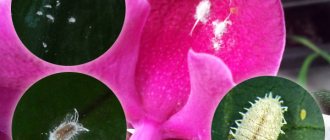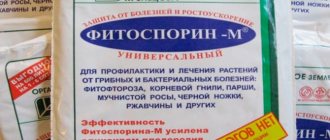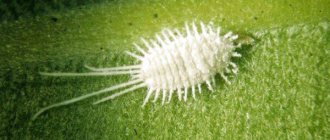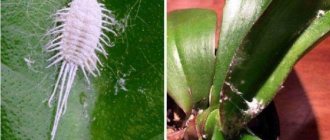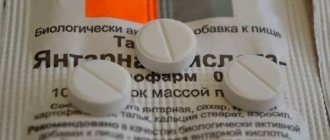Mealybugs (Pseudococcidae), either felt bugs or pseudocushions, belong to the family of hemipteran insects, which includes more than 2200 species. In Europe, only 330 species of scale insects can be found. This insect is very widespread, and it can harm greenhouses, fodder and indoor crops, even succulents and cacti. Popularly, such insects are also called “hairy lice.”
How to dilute aktar for watering indoor plants?
Today, not a single owner of indoor plants is immune from the invasion of dangerous insects - pests that can destroy a flower and cause harm to its root system. If you act on time and take the right actions, you can protect the plant and preserve its beauty. One of the most practical and high-quality drugs that affects the condition of the flower is Aktara. How to dilute Aktara for watering indoor plants? We will learn the answer to this question from this article.
How to breed Aktara?
Prevention of insect development
In order to avoid poisoning yourself and plants with chemicals in the future, it is better to prevent the development of harmful insects. To do this you should:
regularly inspect the plant;- replant flowers in time, renew the soil in pots;
- follow all recommendations for the care of each specific flower;
- promptly remove dried parts of the plant;
- disinfect the soil before planting;
- Quarantine new flowers.
We all want our home to have a lot of greenery, and for this greenery to be healthy and blooming. But this requires effort. Today we described in detail how to deal with one of the types of pests (what other types of scale insects are there and how to deal with them?). This information should help you in properly caring for your plant. And for conscientious care, the plants will definitely reward us with clean air in the house.
Aktara for indoor plants - instructions for use
Aktara is a systemic drug, an insecticide, which was created to combat the most common pests of flowers: thyroid gland, aphids, whiteflies, spider mites, thrips and mealyworms. After treatment with the drug, the plant becomes protected and is completely cleared of pests, which die within 24 hours. But in order to benefit from using the drug, it is important to learn how to use it and strictly follow the instructions given.
Aktara is a fine powder in the form of small grains. It is very easy to use for preparing a special solution or for treating soil. The first signs of insect death can be noticed within 30 minutes. Where can you buy Aktara? The drug is sold in all specialized stores and has different packaging - from 4 g to 250 g. If you want to treat indoor plants, then a 1 g package is ideal for you.
When is the best time to use Aktara? The product is universal, so it can be used all year round, regardless of the air temperature or the influence of sunlight. Aktara is not washed off with water, so indoor plants can continue to be watered as usual. The drug also comes into good contact with other insecticides, so don’t be afraid to mix them.
Advantages of using the drug Aktara:
- Rapid penetration into the leaves of the plant, its shoots and root system. Pests begin to be destroyed almost immediately after applying the drug.
- High efficiency indicators when spraying a flower or adding the drug to the soil.
- A simple recipe for preparing the solution and the product dissolves quickly.
- Long-term protection of plants from the negative influence of several insects at once.
- Economical consumption and minimal number of treatments.
- Long-lasting effect even after a single application.
- High activity at low, high temperatures, scorching sun or high humidity.
Important! With frequent use of Aktara, some pests become accustomed to it, so they may no longer react to its presence.
Reviews from flower growers
Maria, Chelyabinsk. Aktara was saved from a scale insect invasion. I tried to remove the insects mechanically, covered the cymbidium leaves with soap, but they kept coming back. When I noticed that several flowerpots were affected, I used actara. In just two treatments, the insects disappeared completely and did not appear again. Now I always keep the aktara next to the plants.
Ekaterina, Kazan. The best insecticide I've ever tried. It poisons everything that comes under the hot hand. The granules dissolve well in cold water. The price is affordable. I treated the orchids - sprayed them from all sides and soaked the pots in a basin. Moreover, the solution that remains can be used for other plants without fear of infection or epidemic.
Antonina, Nizhny Novgorod. Instant impact combined with the total destruction of all parasites. I think I could literally hear maggots and insects falling from the plants onto the floor. I used it normally in my apartment, no side effects or allergies were observed. It is important to follow the instructions on the packaging and ventilate the room after treatment. If you are really afraid of getting poisoned, then you can just water/soak the plant.
How to use Aktar for indoor plants?
So, if you bought the drug, you need to mix it correctly, while observing the established proportions. Preparation of the solution begins with heating the water, the temperature of which should be no lower than +25 degrees. It is in this water that all the granules of the product will dissolve. For 5 liters of water you will need 4 g of Aktara. If this volume is too large for you, then create a proportion and use the amount of the drug that suits you.
Immediately after treating the plant, be sure to ventilate the room, since the product quickly spreads through the air. What to do if it is not possible to spray the room? In this case, it is recommended to pour the drug directly into the ground. Then, through the roots, the product spreads throughout the flower and reaches its very top leaves, killing all pests in its path. Is Aktara safe for the plant itself? Undoubtedly. It will not harm your flower, so you don’t have to worry about its safety.
Also always follow safety rules when spraying plants. Wear gloves to protect the delicate skin of your hands and gauze bandages to prevent particles of the drug from entering the respiratory tract. If Aktara accidentally gets on your skin, immediately rinse it off under strong water pressure, and then lubricate it with a light, moisturizing cream. Always hide the drug if there are children in the house.
So, now you know how to dilute actara for watering indoor plants. We hope that our tips will help you protect your indoor flowers from the negative influence of insects, so that you can continue to enjoy the beauty, greenery and flowering of your plants.
See also video: How to grow aktara for watering and spraying indoor plants
Reasons for appearance
The main reasons are:
- Presence of larvae or eggs in the soil . Moreover, it could even be a substrate from the store. Therefore, it is important to disinfect the soil before planting. To do this, place the soil in the microwave for a few minutes or put it in the freezer overnight.
- Moving mealybugs from a new plant . To prevent this from happening, always quarantine the newly arrived plant in a separate room and monitor its condition for about a month.
- Improper care:
- cold room;
- watering with untreated water or water of the wrong temperature (both too warm and too cold have a bad effect);
- poor ventilation of the room;
- overly active introduction of nutritional complexes.
Description
The insecticide "Aktara" is a systemic drug that combines both intestinal and contact action. The product is produced in the form of granules, packaged in 4 g in foil vacuum bags.
Thanks to its systemic action , "Aktara" is used for indoor plants in the fight against such pests: scale insects, aphids, mealybugs, thrips, whiteflies and other insects. The only enemy that the drug cannot cope with is the tick.
Properties of the insecticide "Aktara":
- instant penetration into the shoots, leaves and roots of the plant;
- good solubility and odorlessness;
- efficiency both when spraying and when applied to the soil;
- long-term protection of the plant from several pests at the same time;
- low application rates and small number of treatments;
- long duration of residual action;
- activity at high temperatures, dry air and high humidity;
- resistance to bright sun.
The active ingredient "Aktar" thiamethoxam spreads throughout the plant after 20 hours. When treating a large plant, the drug reaches its top within 3 days.
The effect of Aktara on insects appears within 30-60 minutes. Their digestive system becomes paralyzed and they stop eating. Weak individuals die immediately, and complete destruction of insects occurs within 24 hours.
The time of residual protective effect of the drug when sprayed is 15 - 28 days, when applied to the soil - approximately 40 - 60 days.
An important point is that with repeated treatments, the drug can cause insects to become addicted to it. Therefore, it is recommended to alternate Aktara with other chemicals.
The drug is compatible with all fungicides and other insecticides, except for products that contain soap, lime and Bordeaux mixture.
Processing rules
All parts of the plant must be treated
The use of this drug against parasites on orchids is simple; step-by-step instructions will help you carry out the treatment procedure correctly:
- To irrigate the above-ground part, it is recommended to use a special fine sprayer that sprays the liquid efficiently and evenly. It is necessary to capture all the organs of the plant - peduncles, leaves on both sides, pseudobulbs, roots.
- You can use it at any time of the day, its effectiveness does not decrease.
- Some gardeners prefer to process flowers by immersion in a pre-prepared solution.
- Repeated treatment is carried out after 2-3 weeks, or after 7 days, but with a different insecticide. Additional irrigation or watering with this medicine is extremely rarely required, since it has a strong effect and copes with pests the first time.
Spraying in residential areas is prohibited, as it is a toxic substance that can cause poisoning in humans and pets.
Instructions for use of the drug Aktara
The Aktara working solution should be prepared It is advisable to treat plants with a freshly prepared solution.
It is recommended to spray the composition at a distance of 25 to 30 cm from the affected plant.
Doses of the drug when treating indoor plants:
For spraying plants: 4 g of Aktara should be diluted in 5 liters of water. The resulting solution is enough for about 125 small plants.
For watering the soil . 1 g of Aktara should be diluted in 10 liters of water. The resulting quantity should be enough for 250 plants.
With a large number of pests. It is recommended to combine watering the soil with spraying the above-ground part of the plant.
Advantages and disadvantages
The effectiveness of Aktara has been appreciated by many gardeners. It has several pros and cons.
| Advantages | Flaws |
|
|
Precautionary measures
"Aktara" belongs to moderately dangerous drugs ( third hazard class ) and requires special precautions:
- When working with the drug, you must use a respirator, safety glasses and rubber gloves.
- While processing plants, you should not eat, drink, or smoke.
- After completing the work, you need to ventilate the room well, wash your hands and face thoroughly, rinse your mouth and change clothes.
- The remaining solution along with the dishes should be disposed of by burning in a specially designated place.
- Do not throw the solution and the used container into bodies of water.
- The drug should be stored separately from food products, at a temperature from -15 ° C to +35 ° C and in a place inaccessible to children and animals.
Learn about the medicinal properties of alocasia, which it exhibits in home care.
Seek professional advice if it's time to replant your favorite anthurium while caring for it at home.
Hyacinths can be planted in the ground in the fall; read more here.
Analogs
The drug can be used for prevention
According to the stated characteristics of the manufacturer, this drug has no analogues that could replace it in terms of quality and effectiveness.
Nevertheless, there are several similar drugs, the active components of which destroy orchid pests.
Tiara
The composition includes the active substance - thiamethoxam, but the effect of this drug is not similar to the medicinal properties of Aktara.
Price - 3200 rub. for 1 l.
Cruiser
It has long-lasting protective properties and is more suitable for treating seeds and soil-based plants. When irrigating orchids, it instantly penetrates into the cells of all organs. It affects the nervous system of parasites that love to feast on the juice of flowers.
The cost for one 5 liter bottle is 2500 rubles.
Doctor 8 arrows
A domestically produced drug that has a good and fast effect. Available in the form of arrows. They are carefully inserted into the substrate. After this, irrigation of the above-ground part with a solution of laundry soap is required, since the active substance begins to act on the 8th day of use.
Price — 35 rub.
What to do if you are poisoned by Aktara?
Symptoms of drug poisoning : sweating, rapid breathing, decreased motor activity, convulsions. In case of poisoning, the following measures should be taken.
- First of all, it is necessary to ensure a flow of fresh air.
- If the product gets on your skin, wash it off with water and soap.
- If the drug gets into your eyes, rinse them thoroughly under running water.
- In case of accidental ingestion, drink 4 glasses of liquid and induce vomiting.
- Then you should take activated charcoal and consult a doctor immediately.
"Aktara" can become a faithful and reliable defender of a home flower greenhouse from attacks by voracious pests. The main thing is to use the drug correctly and not forget about precautions, and Aktara will take care of the safety of your green pets.
We also recommend that you familiarize yourself with the experience of an amateur gardener in protecting an orchid from mealybugs using Aktara.
News from partners:
2 comments
I will definitely try this product. And I know how to get rid of ants using a folk remedy that has been proven in practice. This is ordinary salt. Sprinkle salt on the areas where there are the most ants. And literally in a week you will forget about their existence.
I have been using this drug for quite some time. Aktara is a good preparation for treating potatoes against beetles and garden plants. The drug dissolves quickly in water and does not emit an unpleasant odor, so you can work without problems.
Purpose
Aktara is a broad-spectrum enteric-contact insecticide belonging to the group of neonicotinoids. Aktara is an effective systemic drug for exterminating various types of pests and cultivating soil, and unfavorable weather conditions do not reduce the speed and effectiveness of its action. An insecticide is used against:
- Colorado potato beetle on potatoes,
- aphids on currants,
- and also against thrips,
- aphids,
- false scale insects,
- scale insects,
- worms,
- Podurov
- and whiteflies on flower crops.
Scale insect resistant to Aktara
#1 Natali
There are worms on the hoykas. She spilled it with Aktara, which was kept in a cache, but it didn’t help - after 4 days the worm, turned over on its belly, was happily shaking its legs.
I decided that Aktara was fake, bought a new one, and spilled it. Three days later, the bug is still alive, healthy and cheerful.
Today I wiped the stains with alcohol. But this is not a solution, because... There are probably some individuals already living on the neighboring hoyas that I didn’t notice.
Question: what else can you do to poison a mealybug without getting poisoned yourself?
By the way, this bug, like scale insects, secretes a sticky liquid. This is the first time I have encountered this.
#2 Nat
Natasha, what concentration of Aktara did you do?
#3 Tata
I have such a nasty bug on my figs.
#4 Natali
Natasha, what concentration of Aktara did you do?
About 2-3 times higher than in the instructions. Do you think we should pour a more concentrated one?
I have such a nasty bug on my figs.
Doesn’t he respond to Aktara either?
#5 [email protected]
I once struggled with a mealybug on a compact plant, first I washed it (to wash off the scaleworms and sticky coating) and diluted it according to the instructions, I lowered the entire plant with soil for 5-10 minutes, then on newspapers so that the moisture was absorbed from the soil and planted it in fresh substrate, but I had a hoyka in quarantine and didn’t have to wash all the plants and the window
I read in the Internet that sometimes Aktara is apparently of poor quality and there is no effect, but so far everything has been ok for me
I also infused tangerine and orange peels (folk remedy) in water and sprayed them with this solution as a preventive measure between treatments with Aktara
The bug is very harmful and can come out again in a year if not completely destroyed
Post edited [email protected]
(18.06.2013 – 12:40):
#6 Tata
Doesn’t he respond to Aktara either?
No. First I sprinkled the powder on the ground, hoping that it would work when watered.
I watered it with new Aktara, liquid, and spread it out a lot without measuring. Now we are waiting, sir.
#7 Natali
I read in the Internet that sometimes Aktara is apparently of poor quality and there is no effect
This is not my case, because... the false scale insect was killed once or twice by processing from the same Aktara package.
No. First I sprinkled the powder on the ground, hoping that it would work when watered.
I, too, back in the winter, when I first noticed the white reptiles, simply “salted” the soil (this method worked flawlessly for scale insects).
Could we not use such a low dosage (after all, Aktara does not completely dissolve in one watering) contribute to the development of resistance in the scale insect?
#8 Nat
It seems to me that Aktara is an easily soluble drug (not, for example, superphosphate, which takes a very long time to dissolve).
And even if Aktara is sprinkled and then watered, it should dissolve in moist soil within 24 hours. Or not?
I once had both a whitefly and a mealybug on a pomegranate. I watered the solution with 1 r. 2 times a week (2 times was for safety net).
The solution was made as follows: 0.5 l. a jar of water - soaked the end of a teaspoon in water and dipped it into a bag of Aktara. Whatever stuck, I dissolved in a jar of water. A lot stuck
#9 Natali
And even if Aktara is sprinkled and then watered, it should dissolve in moist soil within 24 hours. Or not?
For me it completely disappears only after a few waterings.
#10 Natali
I watered it with new Aktara, liquid, and spread it out a lot without measuring. Now we are waiting, sir.
Tanya, is there a result?
On Friday I diluted more than half a pack of dry Aktara per liter of water and watered it very generously. Today (three days after treatment) I picked the first mealybug I came across from the plant - alive and cheerful!
#11 Nat
Natasha, maybe I should try green soap? It is from all sucking and harmless
PS I fell in love with him this weekend. works flawlessly against flying aphids on tomatoes in open ground
#12 Tata
After liquid Aktara, I don’t seem to see any scale insects.
#13 Natali
Natasha, maybe I should try green soap?
I don’t want to bother with soap and other folk remedies. I would like something more effective so that I can treat it once and get rid of it forever.
For now I’m saving myself with alcohol wipes, but someone always goes unnoticed and after a week I find new, fresh masonry.
I want to spray it with Aktara tomorrow. Maybe at least the contact method will work?
After liquid Aktara, I don’t seem to see any scale insects.
Those. Did you leave a “control” on the plant?
#14 Tata
No, I didn’t guess. This weekend I’ll clear out the thickets on the windowsill and see what’s on the other plants.
Signs you have a mealybug
reverse side
Since the mealybug sucks nutrients from the leaves, the leaves may be deformed, and the plant itself is greatly inhibited in growth.
It is necessary to look for mealybugs not only on the leaves, but also in the root system. As it turns out, it does well in pots too. That’s why I’ve recently fallen in love with transparent pots, because you’re less likely to miss some “uninvited guest.”
First, I cleaned all the leaves of plaque and insects using a cotton pad soaked in a solution of green soap. The soap remaining on the foliage and stems will help the active drug linger on the green part of the plant, rather than safely forming a droplet and draining from the leaf. Since I did not have time to wait for further manifestations of the mealybug, the next day I treated it with Fitoverm. There are a lot of drugs that are recommended for mealybugs, but I have been using Fitoverm for a long time, since it gives positive results for me.
I make a fairly strong solution: 2 ml of the drug per 200 ml of water for spraying and watering. First, I thoroughly irrigate the plants, and then pour them at the root. If possible, it is better to change the soil of the infected plant, since I had a recently purchased plant and I was going to change the soil and pot anyway, so I immediately did this. I bake the soil for all my plants in the oven so that when I change the soil, I don’t get any other pests. I even carefully cultivate the store soil.
I washed the roots with Fitoverm and thoroughly sprayed the green part of the plant. The treated plant can be left in quarantine for a week, and after a break the treatment can be repeated.
The waxy coating makes mealybugs very difficult to kill. Therefore, the poison will only affect young individuals. Adults will have to be removed manually. Because of this feature, the treatment can be repeated two to five times!
